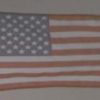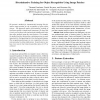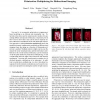CVPR
2005
IEEE
15 years 3 months ago
2005
IEEE
The recent explosion of interest in graph cut methods in computer vision naturally spawns the question: what energy functions can be minimized via graph cuts? This question was fi...
CVPR
2005
IEEE
15 years 3 months ago
2005
IEEE
This paper addresses the problem of learning and recognizing human activities of daily living (ADL), which is an important research issue in building a pervasive and smart environ...
CVPR
2005
IEEE
15 years 3 months ago
2005
IEEE
Our objective is to model the visual manifold of object appearance corresponding to geometric transformation. We learn a generative model for object appearance where the appearanc...
CVPR
2005
IEEE
15 years 3 months ago
2005
IEEE
A novel method for the simultaneous modeling and tracking (SMAT) of a feature set during motion sequence is proposed. The method requires no prior information. Instead the a poste...
CVPR
2005
IEEE
15 years 3 months ago
2005
IEEE
This paper presents a new model to overcome the occlusion problems coming from wide baseline multiple camera stereo. Rather than explicitly modeling occlusions in the matching cos...
CVPR
2005
IEEE
15 years 3 months ago
2005
IEEE
To increase the range of sizes of video scene text recognizable by optical character recognition (OCR), we developed a Bayesian super-resolution algorithm that uses a text-specifi...
CVPR
2005
IEEE
15 years 3 months ago
2005
IEEE
In this work we propose a model for video scenes that contain temporal variability in shape and appearance. We propose a conditionally linear model akin to a dynamic extension of ...
CVPR
2005
IEEE
15 years 3 months ago
2005
IEEE
We introduce mixture trees, a tree-based data-structure for modeling joint probability densities using a greedy hierarchical density estimation scheme. We show that the mixture tr...
CVPR
2005
IEEE
15 years 3 months ago
2005
IEEE
We present a method for automatically learning discriminative image patches for the recognition of given object classes. The approach applies discriminative training of log-linear...
CVPR
2005
IEEE
15 years 3 months ago
2005
IEEE
Our goal is to incorporate polarization in appearancebased modeling in an efficient and meaningful way. Polarization has been used in numerous prior studies for separating diffuse...



